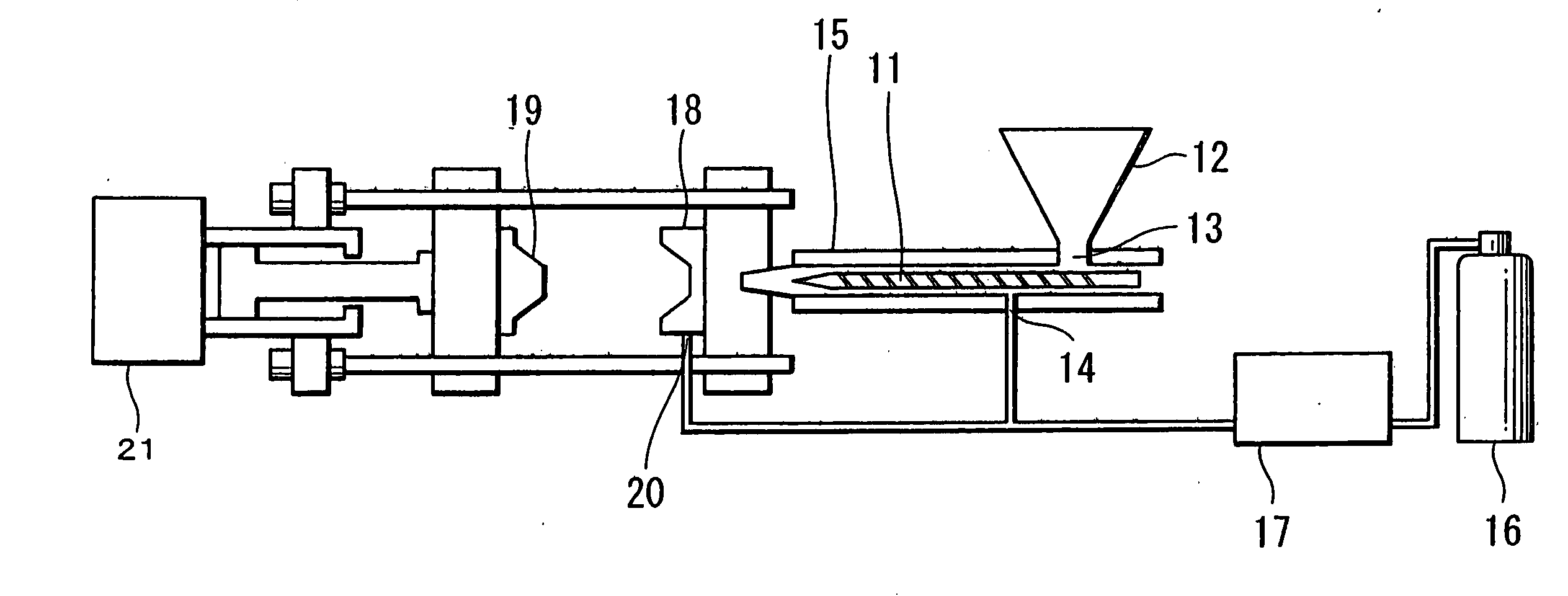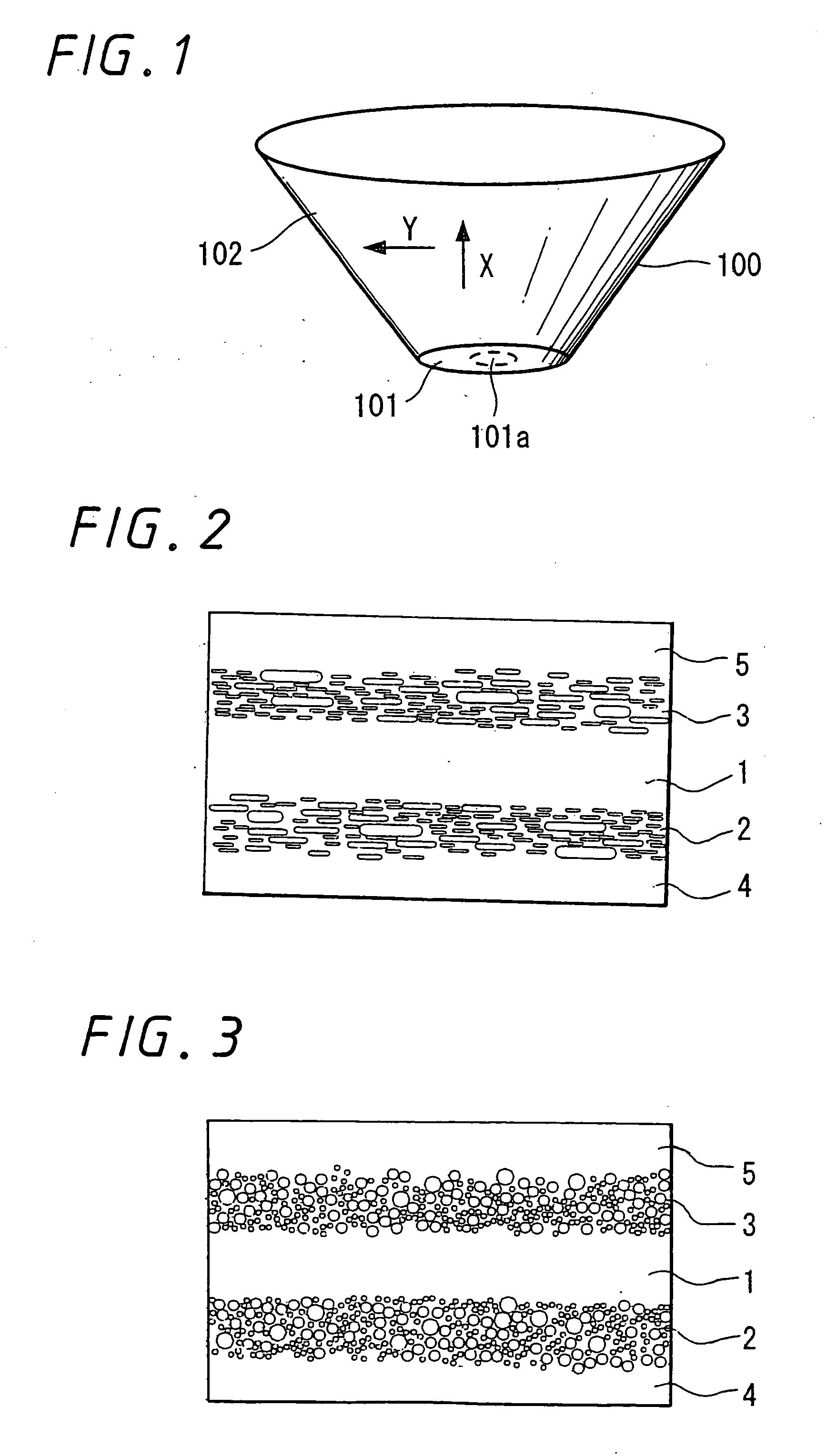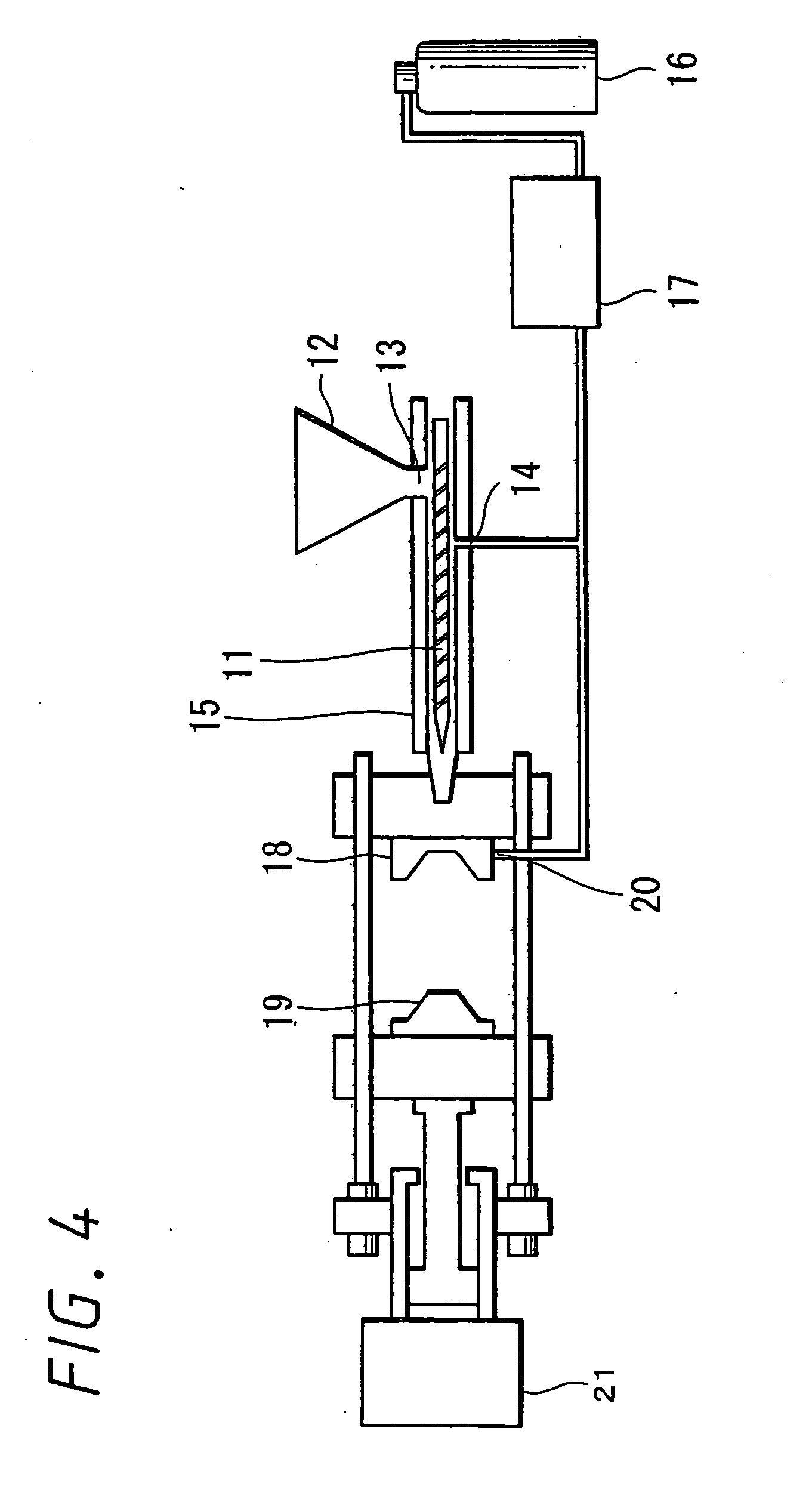Resin-molded component and method for manufacturing thereof as well as diaphragm for loudspeaker
a technology of loudspeaker and resin-molded components, which is applied in the direction of diaphragm construction, synthetic resin layered products, transportation and packaging, etc., can solve the problems of large internal loss, difficult thin-loading, and large specific modulus, and achieve the effect of preferable characteristics
- Summary
- Abstract
- Description
- Claims
- Application Information
AI Technical Summary
Benefits of technology
Problems solved by technology
Method used
Image
Examples
example 1
PRACTICE EXAMPLE 1
[0035] Specialized polyolefin resin (brand name: LUBMER® L3000 manufactured by Mitsui Chemicals) made by multistage-polymerizing ultra-high molecular polyolefin and other high molecular polyolefin, which is one of the resin materials in which an oriented minute-foaming layer is apt to form on injection molding, was used in a practice example 1. Resin was injected from the hopper 12 and was heated to 280° C. and melted in the plasticization screw portion 11; and liquefied carbon dioxide gas from the steel bottle 16 was pressurized by the pressurizing pump 17 up to 6 Mpa and injected into the plasticization screw portion 11. The molds 18, 19 were filled with resin at a temperature of 80° C. and at an injection speed of 800 mm / s, pressure was maintained, and then the molds 18, 19 were opened by 0.2 mm to be cooled and a diaphragm was taken out.
[0036] As a result, a favorable molded product was obtained in which on the outer appearance skin layers were formed, and the...
example 2
PRACTICE EXAMPLE 2
[0037] The same resin as used in the practice example 1 was used for molding, and after resin was filled, molds were opened by the amount of 0.4 mm to further improve the expansion ratio. The thickness of the diaphragm obtained was approximately 0.7 mm, and the shape of foams was similar to those of the practice example 1.
example 3
PRACTICE EXAMPLE 3
[0038] The same resin as used in the practice examples 1 and 2 were used, and after resin was filled, molds were opened by the amount of 0.6 mm to mold a diaphragm. Though uniformity was not obtained on the surface of a diaphragm due to generation of a sink, similar shape to those of practice examples 1 and 2 was obtained with respect to the state of foams.
[0039] With those results of practice examples 1 to 3, it is recognized that resin was foamed without exceeding a predetermined extent even if carbon dioxide gas was dissolved, and a portion capable of foaming was limited to the oriented minute-foaming layers 2, 3, which was confirmed when seeing the cross section. Accordingly, it is understood that when resin is molded 1 mm or less in thickness, a favorable foaming condition can be obtained on molding.
PUM
| Property | Measurement | Unit |
|---|---|---|
| diameter | aaaaa | aaaaa |
| temperature | aaaaa | aaaaa |
| pressure | aaaaa | aaaaa |
Abstract
Description
Claims
Application Information
 Login to View More
Login to View More - R&D
- Intellectual Property
- Life Sciences
- Materials
- Tech Scout
- Unparalleled Data Quality
- Higher Quality Content
- 60% Fewer Hallucinations
Browse by: Latest US Patents, China's latest patents, Technical Efficacy Thesaurus, Application Domain, Technology Topic, Popular Technical Reports.
© 2025 PatSnap. All rights reserved.Legal|Privacy policy|Modern Slavery Act Transparency Statement|Sitemap|About US| Contact US: help@patsnap.com



